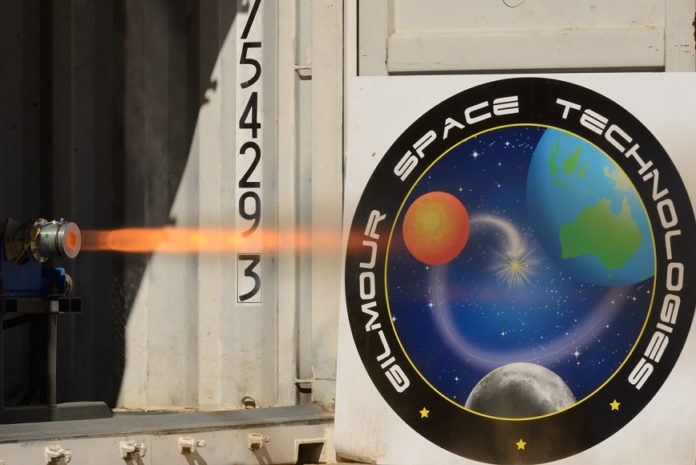Gilmour Space Technologies, a new space launch company based in Australia and Singapore, has successfully completed the first of four rocket motor tests for a CubeSat propulsion system that can potentially send CubeSats to the moon, Mars, and beyond.
This is the world’s first CubeSat propulsion system designed for interplanetary missions, and has been named the CubeSat In-Space Propulsion System. Using a mini hybrid-propulsion engine, each CubeSat will be able to accelerate while in Low Earth Orbit (LEO), and then use Earth’s gravity well to slingshot itself to other destinations, in a manoeuvre known as the Oberth Effect.
Similar slingshot techniques, such as gravity assist manoeuvres, have previously been employed for deep space missions such as the Indian Space Research Organisation’s (ISRO) Mars probe and NASA’s Cassini probe. However, they have never before been used for CubeSats or other types of smallsats.
In its recent test, the CubeSat In-Space Propulsion System generated 1,800N of thrust, with an estimated total delta-V (change in velocity) of over 4 km/s. Low-cost and safe, the engine uses hydrogen peroxide and proprietary 3D printed fuels, and will hopefully be fully tested by the end of the year.
“This was our first test of a mini hybrid-propulsion engine, which could potentially send a 1U CubeSat from Earth’s orbit to that of other moons or planets in the solar system,” said Gilmour Space CEO & Founder, Adam Gilmour.
“Our hybrid system is also comparatively non-toxic and non-explosive,” he added, “which would make these interplanetary missions orders of magnitude less expensive and risky than many current designs. It’s something that the European Space Agency might want to consider it for their Mars sample return missions, for example.”
The company hopes that their mini propulsion system will encourage space exploration by enabling smaller, cheaper and smarter missions. It is also currently in the design phase of a similar propulsion system for small satellites up to 20 Kg.
This announcement comes two months after the company raised AUD 5 million (USD 3.7 million) in private funding from Blackbird Ventures and 500 Startups to develop and launch its low-cost rockets for the global small satellite industry. Its first suborbital launch is slated to take place in late 2018, using its Ariel sounding rocket.







